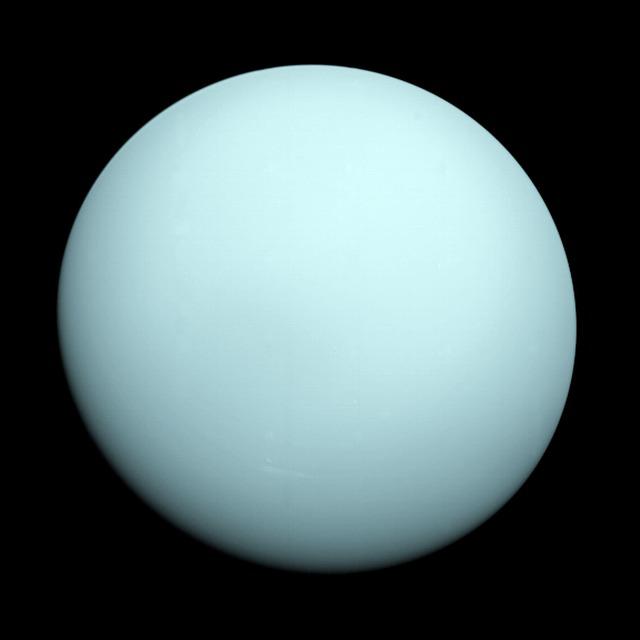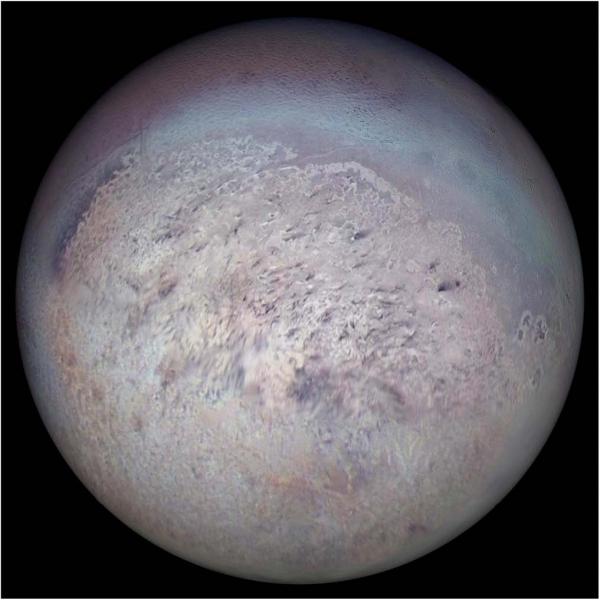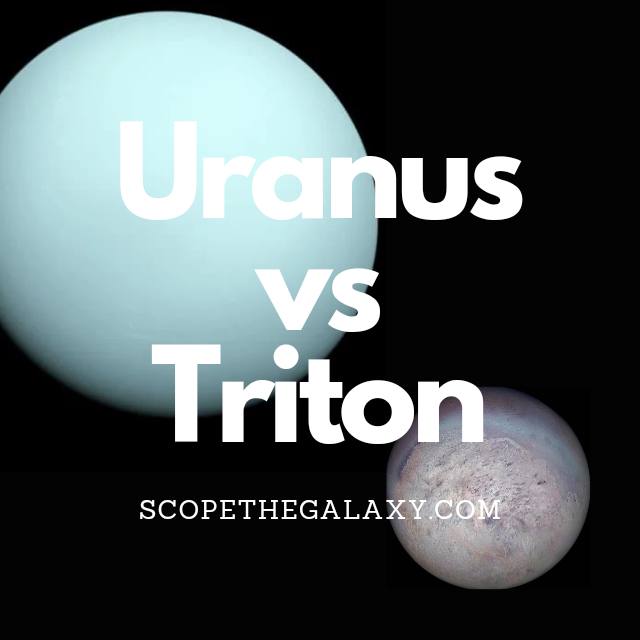*This post may contain affiliate links. This means we may make a commission if you purchase an item using one of our links*
The main differences between Uranus and Triton is that Uranus is an ice based gas giant whilst Triton is a natural satellite, Uranus is almost 20 times larger than Triton and Uranus has an axial tilt of 98 degrees whilst Triton’s axial tilt is practically 0.
There are various differences between the two so continue reading for a more detailed look at each of these celestial bodies along with their similarities and differences below.
What Is The Planet Uranus?
Table of Contents

Uranus is the 7th farthest planet from the Sun and the 3rd largest planet in our solar system, coming in at a diameter of 50,724 km. This means that roughly 63 Earth’s could fit inside this ice giant.
In regards to why this cyan blue planet is referred to as an ice giant, it’s down to it’s composition. Uranus is made mostly of methane, ammonia and water with its atmosphere mostly consisting of hydrogen and helium, much like the Sun, and the other giant planets in our solar system.
Due to its distance from the Sun, it takes Uranus 84 years to complete one orbit our central star, whereas it’s axial rotation is much faster than even our Earth at 17 hours per rotation.
As a result of its distance from the Sun, ice based composition and faster rotation levels, Uranus is far from an ideal place to live in let alone have the potential to support life.
Its base temperature is generally a chilling -190 to -200 degrees Celsius and its rocky core, although hot, is still on the cooler side for a large planet sitting around the 5,000 degrees Celsius range.
The planet’s winds are also very fast often hitting 900 km/h, which is roughly twice that of Earth’s most powerful turbulent wind speeds.
In regards to the moons surrounding this cyan planet, we’ve discovered 27 small ones orbiting it. Furthermore, it has 13 rings surrounding it which also means Uranus has the most abundant collection of rings surrounding in our solar system, which is even more than Saturn.
One of the Uranus’ most unique features would include the manner in which it rotates around its axis. As opposed to the slightly angled rotation that the likes of Earth, Saturn and most other planets display, Uranus’ axis is positioned at a 98 degree angle.
What this means is this ice giant completes an axial rotation on its side as opposed to the relatively up straight positioning of most of the other planets in our solar system.
What Is The Moon Triton?

Triton is the largest moon of Neptune, whose most unusual feature is its retrograde orbit. Triton is the only major moon in our solar system which orbits in the opposite direction of its planet’s rotation.
First discovered on 10th October 1846 (just 17 days after the discovery of its planet, Neptune) by British astronomer William Lassell, “Triton” comes from a merman in Greek myth; a name which perhaps stems from the composition of this faraway moon.
The diameter of Triton is approximately 2,706km, making it a similar size to Earth’s moon. However, we know that its mass is far less than the first estimates suggested because data from Voyager showed that the surface is icy and highly reflective, a less dense composition than the dark surface of our moon.
This icy surface has resulted in ice based natural satellite displaying temperatures in the region of – 235 degrees Celsius.
This lower density stems predominantly from the water-ice interior encasing a denser rock core. Still, the mean density of 2.06 grams per cubic cm remains higher than that of any of Saturn’s or Uranus’ moons. In addition, Triton holds more than 99.5% of the mass of everything that orbits the planet Neptune and its total mass is greater than every smaller satellite in the solar system combined.
Scientists think that Triton may be an object from the Kuiper Belt that Neptune’s gravity captured millions of years ago. This is because it shares many similarities with the dwarf planet Pluto – the best-known world within the Kuiper Belt.
This frozen world is a land of geological oddities with craters and a collection of depressions and ridges known as cantaloupe terrain. The geysers found on this moon shoot plumes of nitrogen as high as 8km high, which creates a thin atmosphere of nitrogen.
In around 3.5 billion years, Triton’s orbit will travel too close to Neptune, and the planet’s gravitational pull will break the moon apart, creating a ring system.
Similarities Between Uranus And Triton
There are a few similarities that Uranus and Triton share, which in this case includes the following:
- Both are a spherical shape.
- Both have a hotter core.
- Both are part of the same solar system.
- Neither have tectonic plates.
- Both orbit another object.
Differences Between Uranus And Triton
The differences between the two include the following:
- Triton orbits Neptune whilst Uranus only orbits the Sun.
- Uranus is an ice based gas giant whilst Triton is a terrestrial based natural satellite.
- Uranus has 27 moons whilst Triton has 0.
- Uranus has a diameter of 50,724km whilst Triton’s diameter is 2,706km.
- Triton has a very thin exosphere composed mostly of nitrogen with small amounts of methane whilst Uranus is gas based, composed mostly of hydrogen with smaller amounts of methane and helium.
- A day on Triton takes 5.877 days whilst a Uranus takes 17 hours.
- It takes Triton 5.877 days to orbit Neptune and around the Sun in 165 years whilst Uranus orbits the Sun in 84 years.
- Uranus has an axial tilt of 98 degrees whilst Triton’s axial tilt is close to 0.
- Triton’s average temperature is around -235 degrees Celsius whilst Uranus has an average temperature of -190 to -200 degrees Celsius.
- Uranus’ density is 1.27 g/cm³ whilst Triton’s density is 2.06 g/cm³.
- Uranus’ mass is 8.681 × 10^25 kg whilst Triton’s mass is 2.14 × 10^22 kg.
- Triton’s gravitational strength is 0.779 m/s² whilst Uranus’ is 8.87 m/s².
- Triton is the only moon in our solar system that orbits its planet in a retrograde orbit whilst Uranus orbits the Sun in the same direction as all the other planets.
- Triton is tidally locked to Neptune whilst Uranus is not tidally locked to any entity.
- Uranus has a magnetosphere whilst Triton does not.
Summary
Uranus and Triton don’t have too much in common other than the fact that both are part of the same solar system and orbit another object, but there are differences too.
Whether it be in regards to mass, size, length of day, axial tilt, the amount of moons that orbit them and more, therefore it does make sense that the two would have a lot of differences and function distinctly from one another.

